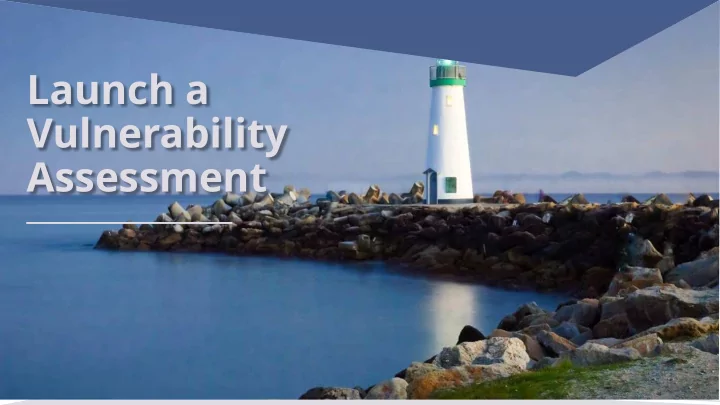

Building Regional Disaster Resilience Launch a Vulnerability Assessment
Building Regional Disaster Resilience Overall Process
Building Regional Disaster Resilience How is this process different? • Goals and values-driven rather than checklist-driven • Multi-discipline, multi-stakeholder process • Multi-hazard, multi-regulation • Offers way of organizing assets and approaching them systematically • Goes beyond exposure to whatever depth you want • Assessment tools highlight cross-disciplinary vulnerabilities • Offers succinct and effective ways to summarize results • Offers tools for evaluating and prioritizing strategic responses to vulnerability • Provides templates for moving from strategies to action
Building Regional Disaster Resilience
Building Regional Disaster Resilience What does the toolkit include? • Detailed guidance on 8-step vulnerability assessment process • What has worked and why? • What lessons have been learned? • Exactly how much analysis do you need to do to find a balance between analysis paralysis and uncoordinated action? • How can you tell the right “story” with your analysis to catalyze real action? • Worksheets, exercises, handouts, resources • Framework for conceptually and procedurally connecting hazards, disciplines, and regulatory requirements
Building Regional Disaster Resilience So, how does this apply to the Central Coast? What we heard from survey participants about doing vulnerability assessments…
Building Regional Disaster Resilience What Plans Have you Done? 25 20 15 10 5 0 In development Completed or revised Implementation Emergency Operations Plan Local Hazard Mitigation Plan General Plan Update Local Coastal Program IRWMP Climate Mitigation Plan Climate Adaptation Plan
Building Regional Disaster Resilience What kind of vulnerability assessment have you done? Wh Where vulnerability assessment was done 16 15 14 12 11 10 10 9 8 7 6 4 4 2 2 0 Local Coastal Plan Emergency Operations Plan Local Hazard Mitigation Plan General Plan IRWMP Climate Mitigation Plan Climate AdaptationPlan
Building Regional Disaster Resilience How many resilience regulations do you need to comply with? Numbe Num ber of regul gulations ns conc ncerne ned d abo about ut 20 19 18 16 14 12 10 8 7 7 6 5 4 3 2 0 0 1 2 3 4
Building Regional Disaster Resilience How comfortable are you doing a vulnerability assessment yourself? COMFORT WITH IN-HOUSE VULNERABILITY ASSESSMENT 15% 22% 63% Not at all A little Pretty comfortable
Building Regional Disaster Resilience Which stage of the assessment do you need help with? Vu Vulnerability assessment items that need help Making decisions about implementing strategies based on the assessment 28 Summarizing the assessment 6 Knowing which information is important to collect on assets 11 Going beyond exposure analysis 15 Connecting hazard types 20 Deciding on the correct scope for the assessment 17 Assembling the right kind of cross-disciplinary team 14 0 5 10 15 20 25 30
Rapid Risk Assessment Exercise Building Regional Disaster Resilience Asset: Hazard (note past occurrences): Hazard Impact Statement: Functional Vulnerabilities: Describe asset function and/or relationships with or dependence on other assets that can make them vulnerable to impacts. Is the asset part of a networked system such that damage to other parts ¨ Yes Existing Conditions: Describe the asset and highlight current conditions or stressors that could afgect vulnerability. of the system would afgect the asset’s ability to function? ¨ No If yes, are there alternatives to maintain continuity of service? Physical asset functions (e.g., type of land use, community Type Community Served (e.g. public, elderly, low-income) served, services provided): ¨ Residential What external services does the asset rely on? ¨ Power ¨ Fuel Serves: ¨ Institutional ¨ Communications ¨ Materials/supplies ¨ Industrial ¨ Food ¨ Other: ¨ Commercial If external services were interrupted, are there back up supplies in place? ¨ Yes ¨ Other: ¨ No If yes, how long would they last? (mark one) Who owns the physical asset? Are the owner and manager Owner Manager Hours Days Weeks difgerent? ¨ Public ¨ Public Governance Vulnerabilities: Describe challenges with management, regulatory authority, or funding options for adapting to impacts. ¨ Private ¨ Private ¨ Difgerent than owner? Explain: What governance issues exist and pose a potential risk? (Funding, governance, operation, management?) What is the current condition of the asset? Has it recently been ¨ Yes Are there funding sources that can be used to assess hazard risk, climate ¨ Yes upgraded or retrofjtted? ¨ No vulnerability or resilience? ¨ No ¨ If, yes explain: If yes, describe: Physical Vulnerabilities: Identify conditions or design aspects that make an asset particularly vulnerable to impacts. Consequences : Describe potential impacts on society, equity, the economy, and the environment. What characteristics make the asset more or less vulnerable to hazard? Examples include water or salt-sensitive mechanical components, or fmammable building materials. Who in the community would be afgected by damage, disruption, or loss ¨ People where the live ¨ Elderly of asset function? ¨ People where they work ¨ Youth ¨ People where they recreate ¨ Low Income ¨ Other: What scale of economic disruption would occur if the asset was damaged, ¨ Local Describe: disrupted, or failed? ¨ Regional ¨ State ¨ National What would the consequences be to ecological services be if the asset ¨ Habitat or species benefjts ¨ Water Quality was damaged or lost? ¨ Public access ¨ Other: ¨ Flood risk management
Building Regional Disaster Resilience Example Vulnerability Statement • “The City’s electric utility substation is located in the wildland-urban interface and has been damaged by past wildfire events. It is also in a flood-induced landslide zone and could experience debris flows in a major storm. It serves 18,000 residential and commercial properties and it is the primary power source for this area.” Key Asset + Past or Current Vulnerability = Potential Impact + Defined Audience
Recommend
More recommend